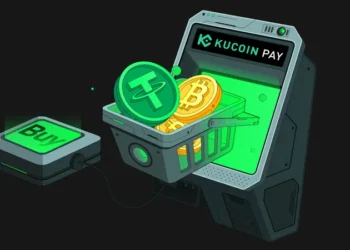Decentralized finance (DeFi) insurance—often called “cover” or insurance alternative—offers products designed to help manage the unique risks in DeFi, such as protocol hacks or stablecoin de-pegging.
In contrast to traditional insurance, exemplified by FDIC insurance, which safeguards against financial losses stemming from custodian mismanagement (e.g., bank insolvency), DeFi intrinsically addresses custodian risks. This is achieved by users maintaining exclusive control over their funds through self-custodial wallets, with transactions executed on public, distributed ledgers (blockchains).
Imagine having insurance for your digital money, such as protection against websites being hacked or code containing bugs. That’s exactly what DeFi insurance, powered by decentralized insurance protocols, offers. These protocols protect users against smart contract risk using coverage protocols and shared funds, bringing on-chain protection to a whole new level.

Understanding How It Works
Traditional insurance involves big companies making deals and deciding on claims; in contrast, decentralized insurance is mutual staking; a big group puts funds into a shared pool. Anyone can buy insurance by staking tokens in the pool, and when a problem happens, like a DeFi hack, people file claims, and the community votes to decide who gets paid. Since everything runs on code, all coverage protocols and claim events are publicly recorded and automatically tracked on the blockchain.
Take Nexus Mutual, one of the first and most trusted platforms and an alternative to insurance for Ethereum users. Members can buy coverage to protect against material losses when transferring funds into a protocol’s smart contracts or keeping funds with a custodian.
Its members stake NXM tokens to back coverage, and if a smart contract they insure gets hacked, members vote on claims, and smart contracts release payouts. Another protocol, InsurAce, offers cheaper coverage across various blockchains. It even helped pay out $12 million after the Terra stablecoin crash.
READ MORE: Can DeFi Insurance Products Solve the Problem of Rug Pulls?
Why This Matters
Before these protocols existed, crypto users had few options, and a hack or bug could mean losing everything. However, these protocols have introduced on-chain protection: security built directly into the blockchain. For example, Cover Protocol and Unslashed use decentralized voting and automated systems to settle claims faster and more transparently.
One powerful tool is smart contract risk coverage and protocols, such as Nexus Cover, which not only protects against hacks but also addresses custody failures and token issues. Others include parametric insurance, which automatically pays out when specific events, such as price changes or oracle failures, occur.
This emerging field is already being called a “sleeping giant” for Web3, as it makes new users feel safer about joining DeFi and encourages developers to build more innovative yet risk-aware applications.
Real-Life Examples
Nexus Mutual has helped many DeFi users after major hacks, with one notable example being its community’s quick payment of millions following the Yearn Finance and Cream Finance exploits.
InsurAce demonstrated its strength during the Terra-USDT depeg crisis, paying out $12 million in claims across multiple chains. Their capital-efficient model and governance shopping make them a strong choice for some users. Unslashed stands out by offering insurance as tradable NFTs, providing users with fast and flexible coverage options.
The Challenges
Despite their promise, decentralized insurance protocols face issues with many people pointing out that community voting can be slow, uncertain, and sometimes unfair, leaving people worried that claims might be denied even after users suffered real losses.
While coverage often depends on people voting, biases, conflicts of interest, and complex terms can make this system less than ideal. Additionally, there is limited coverage, with under 1% of total DeFi assets currently insured. Finally, decisions by battle-tested DAOs (Decentralized Autonomous Organizations) can be tricky, slow, and prone to arguments during voting.
Market adoption of decentralized Insurance protocol
Although decentralized insurance plays a crucial role in the Web3 ecosystem, its adoption is still in the early stages, and when compared to other areas of DeFi, like lending, trading, and staking, the insurance sector remains relatively small. Billions of dollars are locked across major DeFi platforms, but only a small slice of that activity is currently protected by insurance.
Take Nexus Mutual, for example, which is one of the most established DeFi insurance protocols and has sold over $1.5 billion in total coverage since its launch. At any given time, it has around $200 million in active protection. Another protocol, InsurAce, reports that it has protected over $500 million worth of assets across multiple blockchains. Despite these large numbers, they represent only a tiny fraction of the total assets at risk in the DeFi space. In fact, less than 5% of DeFi users regularly purchase insurance for their on-chain activities.
The people using these services today tend to be more experienced with cryptocurrency, and they’re often investors with large sums in DeFi platforms, professional traders managing risk, or institutions and DAOs seeking to protect their treasuries. These users typically seek coverage for smart contract bugs, stablecoin crashes, and security failures, which have caused major losses in the past.
The adoption of DeFi insurance typically spikes after large hacks or collapses. When platforms like Ronin or Wormhole suffered major breaches, users began to take coverage more seriously. Protocols are also helping by improving the user experience, offering more flexible pricing, and expanding support across chains like Polygon, Avalanche, and BNB Chain.
Even with all these measures, many users still struggle to understand how DeFi insurance works or are uncertain whether claims will be paid out fairly. Since some protocols rely on community voting to decide claims, trust in the process can be shaky, and others simply don’t know that decentralized insurance exists or see it as an extra step they don’t want to bother with.
Despite all this, the future of decentralized insurance looks promising because, as more money flows into DeFi and as regulators push for better risk management, insurance could become a built-in feature of Web3. One day, coverage may be included automatically when users deposit funds into a protocol, stake tokens, or mint NFTs, just like how traditional insurance is often bundled with travel or car purchases.
What This Means for Users
For people using DeFi, this is major progress, and decentralized insurance means you can join DeFi without worrying about losing everything to a hack. It also helps developers build bold new apps, knowing users can protect themselves from bugs.
This added safety pushes all of Web3 finance forward, making it more mature, trustworthy, and reliable.
Finally
Decentralized insurance protocols are still quiet, but they have the power to transform the space. They bring on-chain protection, mutual staking, and coverage protocols into the DeFi world. They help secure assets, encourage growth, and make Web3 better for everyone.
While there are still challenges ranging from slow voting to low adoption, DeFi insurance protocols are quickly evolving. With new tools, smarter models, and stronger governance, these platforms could soon become a crucial shield for decentralized finance. The giant is waking up, and once it does, DeFi will never be the same.
Disclaimer: This article is intended solely for informational purposes and should not be considered trading or investment advice. Nothing herein should be construed as financial, legal, or tax advice. Trading or investing in cryptocurrencies carries a considerable risk of financial loss. Always conduct due diligence.
If you want to read more market analysis like this one, visit DeFi Planet and follow us on Twitter, LinkedIn, Facebook, Instagram, and CoinMarketCap Community.
Take control of your crypto portfolio with MARKETS PRO, DeFi Planet’s suite of analytics tools.”





















